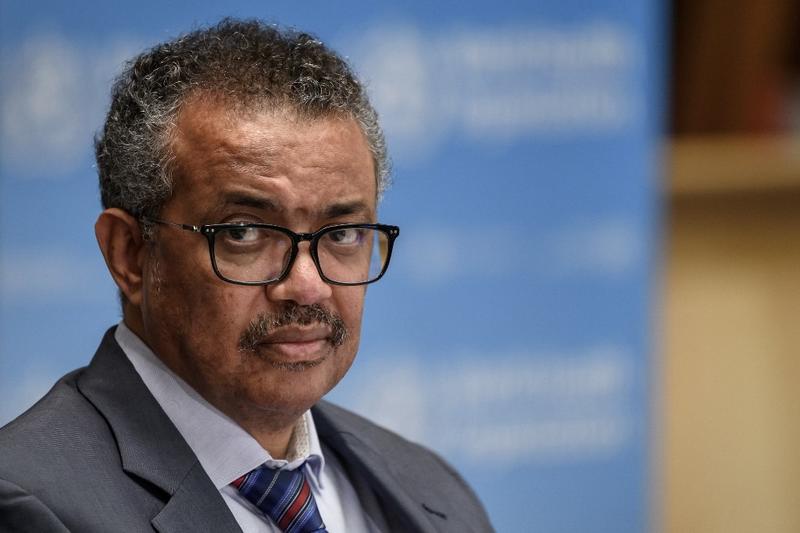 World Health Organization Director-General Tedros Adhanom Ghebreyesus attends a press conference organised by the Geneva Association of United Nations Correspondents (ACANU) amid the COVID-19 outbreak, caused by the novel coronavirus, on July 3, 2020 at the WHO headquarters in Geneva. (FABRICE COFFRINI / POOL / AFP)
World Health Organization Director-General Tedros Adhanom Ghebreyesus attends a press conference organised by the Geneva Association of United Nations Correspondents (ACANU) amid the COVID-19 outbreak, caused by the novel coronavirus, on July 3, 2020 at the WHO headquarters in Geneva. (FABRICE COFFRINI / POOL / AFP)
The World Health Organization will send a team to China this weekend to prepare scientific plans with Chinese counterparts for identifying the zoonotic source of COVID-19.
Mike Ryan, executive director of the WHO Health Emergencies Program, noted that the answers to questions such as how the virus can breach the intermediate barrier to humans can be elusive
WHO Director-General Tedros Adhanom Ghebreyesus said on Tuesday that the experts will develop the scope and terms of reference for a WHO-led international mission.
"The mission objective is to advance the understanding of animal hosts for COVID-19 and ascertain how the disease jumped between animals and humans," he said.
Foreign Ministry spokesman Zhao Lijian said on Wednesday that China and the WHO have been in close communication and cooperation on source tracing since COVID-19 broke out and China has agreed for the WHO to send its experts to Beijing.
They will work with their Chinese counterparts to prepare scientific plans for identifying the source of the virus, he said.
Zhao reiterated that China believes tracing the origin of the virus is a scientific matter that should be studied by scientists and medical professionals through international cooperation.
He added that identifying the origin of emerging viral diseases has proved complex in past epidemics in different countries, and more scientific research will advance the understanding of animal reservoirs and the route of transmission to humans.
ALSO READ: WHO doesn't see bubonic plague in China as high risk
Mike Ryan, executive director of the WHO Health Emergencies Program, noted that the answers to questions such as how the virus can breach the intermediate barrier to humans can be elusive.
"We spent decades trying to do that with Ebola, we spent years trying to do that with MERS, SARS. It takes time," he said.
Ryan emphasized they will keep an open mind. "Science will stay open to all possibilities," he said.
True origin
Science Focus, a science magazine in the United Kingdom, reported on Monday that the virus may have been lying dormant across the world until emerging under favorable environmental conditions, rather than originating in China.
It cited a study by Tom Jefferson from the Centre for Evidence-Based Medicine at Oxford University. Jefferson pointed to recent discoveries of the virus' presence around the world before it emerged in Asia as evidence of its true origin as a global organism that was waiting for favorable conditions to finally emerge.
Traces of COVID-19 have been found in sewage samples from Spain, Italy and Brazil that predate its discovery in China. A preprint study claims to have found SARS-CoV-2 genomes in a Barcelona sewage sample from last March, the Science Focus said.
Contact the writers through chenweihua@chinadaily.com.cn


